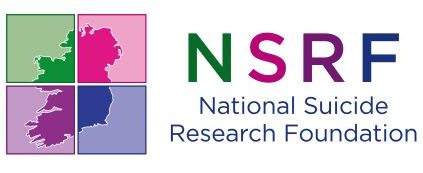Author: Dr Caroline Daly
Content warning: This article contains sensitive material and mention of self-harm methods, which some readers may find distressing. If you need support, please visit Finding Help.
For many of us paracetamol is never far away. It’s in our bags, kitchens, and bathroom cabinets. If and when we want more, we can restock from our nearest corner shop or supermarket. To me, the availability and accessibility of paracetamol warrants questioning and address, and I will explain why.

I’m a Postdoctoral Researcher at the NSRF with a particular interest in preventing intentional drug overdose (IDO). Through the National Self-Harm Registry Ireland we know that paracetamol is the drug most frequently taken in intentional overdose, accounting for approximately 2,300 presentations each year.1 Most people who take paracetamol in overdose are female and under 25 years old.2 Many of these IDOs are clinically serious, and as a result the risk of liver transplant following paracetamol overdose in Ireland is 6-times the European average.3 These physical consequences occur in tandem with social and psychosocial impacts of IDO on individuals and their wider circles. Worryingly paracetamol IDOs by young people are increasing each year.2
Restricting access to means of self-harm and suicide is the single most effective prevention measure, working best when implemented concurrently with multilevel interventions. Statutory legislation in Ireland since 2001 restricts the sale of over-the-counter paracetamol to a maximum pack of 24 tablets in pharmacies and 12 tablets in non-pharmacy outlets, with authorisation for one pack to be sold per transaction. These restrictions have led to a decrease in deaths involving paracetamol and a reduction in the toxicity of IDOs.4-6 However pack size restrictions have not reduced the frequency of paracetamol IDOs, and Ireland still has one of the highest incidences of such in Europe.7 In addition adherence to existing legislation in Ireland is reportedly poor.8,9
So where can we go from here? In recent years two measures have shown promise in reducing or preventing paracetamol IDO. Paracetamol overdose is significantly lower in countries where the sale of paracetamol is restricted to pharmacies only.7 There are costs to implementing such a measure in Ireland, predominantly to those who use paracetamol safely; however, the benefits in terms of potential reductions in self-harm and overuse of paracetamol are likely to be much greater. In Denmark, confining the sale of paracetamol to those aged 18 and over has also led to significant reductions in their overdose.10 It seems inconceivable that paracetamol can be sold to a child without question, considering its potential harms; especially when we have a justifiable stance against the sale of alcohol to this same subgroup.
With each paracetamol IDO recorded, and every individual affected by these acts, I am assured that further regulations are not only justified but essential to addressing IDO and self-harm here in Ireland. In an effort to address these concerns and supported by robust evidence, colleagues and I have set up an interdisciplinary Working Group to review and implement effective interventions to reduce access to paracetamol in Ireland, in collaboration with government, the pharmacy and retail sectors. I hope that in time and with evidenced measures in place, I might report back with positive news about reductions in paracetamol IDOs in Ireland.
If you have been affected by the content of this article, please visit Finding Help.
- Joyce M, Daly C, McTernan N, Griffin E, Nicholson S, Arensman E, Williamson E, Corcoran P. (2020) National Self-Harm Registry Ireland Annual Report 2019. Cork: National Suicide Research Foundation.
- Daly C, Griffin E, McMahon E, Corcoran P, Webb RT, Ashcroft DM, Arensman E. (2020) Paracetamol-related intentional drug overdose among young people: a national registry study of characteristics, incidence and trends, 2007-2018. Soc Psychiatry Psychiatr Epidemiol. 56(5):773-81.
- Tittarelli R, Pellegrini M, Scarpellini MG, Marinelli E, Bruti V, di Luca NM, Busardò FB, Zaami S. (2017) Hepatotoxicity of paracetamol and related fatalities. Eur Rev Med Pharmacol Sci. 21(1 Suppl):95-101.
- Morgan OW, Griffiths C, Majeed A. (2007) Interrupted time-series analysis of regulations to reduce paracetamol (acetaminophen) poisoning. PLoS Med. 4(4):e105.
- Hawton K, Bergen H, Simkin S, Dodd S, Pocock P, Bernal W, et al. (2013) Long term effect of reduced pack sizes of paracetamol on poisoning deaths and liver transplant activity in England and Wales: interrupted time series analyses. BMJ 346:f403.
- Hawton K, Simkin S, Deeks J, Cooper J, Johnston A, Waters K, et al. (2004) UK legislation on analgesic packs: before and after study of long-term effect on poisonings. BMJ 329(7474):1076.
- Morthorst B, Erlangsen A, Nordentoft M, Hawton K, Groth Hoeberg LC, Dalhoff K. (2018) Availability of Paracetamol Sold Over the Counter in Europe: A Descriptive Cross-Sectional International Survey of Pack Size Restriction. Basic Clin Pharmacol Toxicol 122, 643-649.
- Molloy P, Chambers R, Cork T. (2016) How well are national guidelines relating to the general sales of aspirin and paracetamol, adhered to by retail stores: a mystery shopper study. BMJ Open 6(1):e010081.
- Ni Mhaolain AM, Davoren M, Kelly BD, Breen E, Casey P. (2009) Paracetamol availability in pharmacy and non-pharmacy outlets in Dublin. Ireland. Ir J Med Sci. 178(1):79–82.
- Erlangsen A. (2019) Rater for Selvmord og Selvmordsforsøg. Available at: http://drisp.dk/wp- content/uploads/2019/01/Rater-for-Selvmord-og-Selvmordsfors%c3%b8g_Jan_2019-1.pdf

